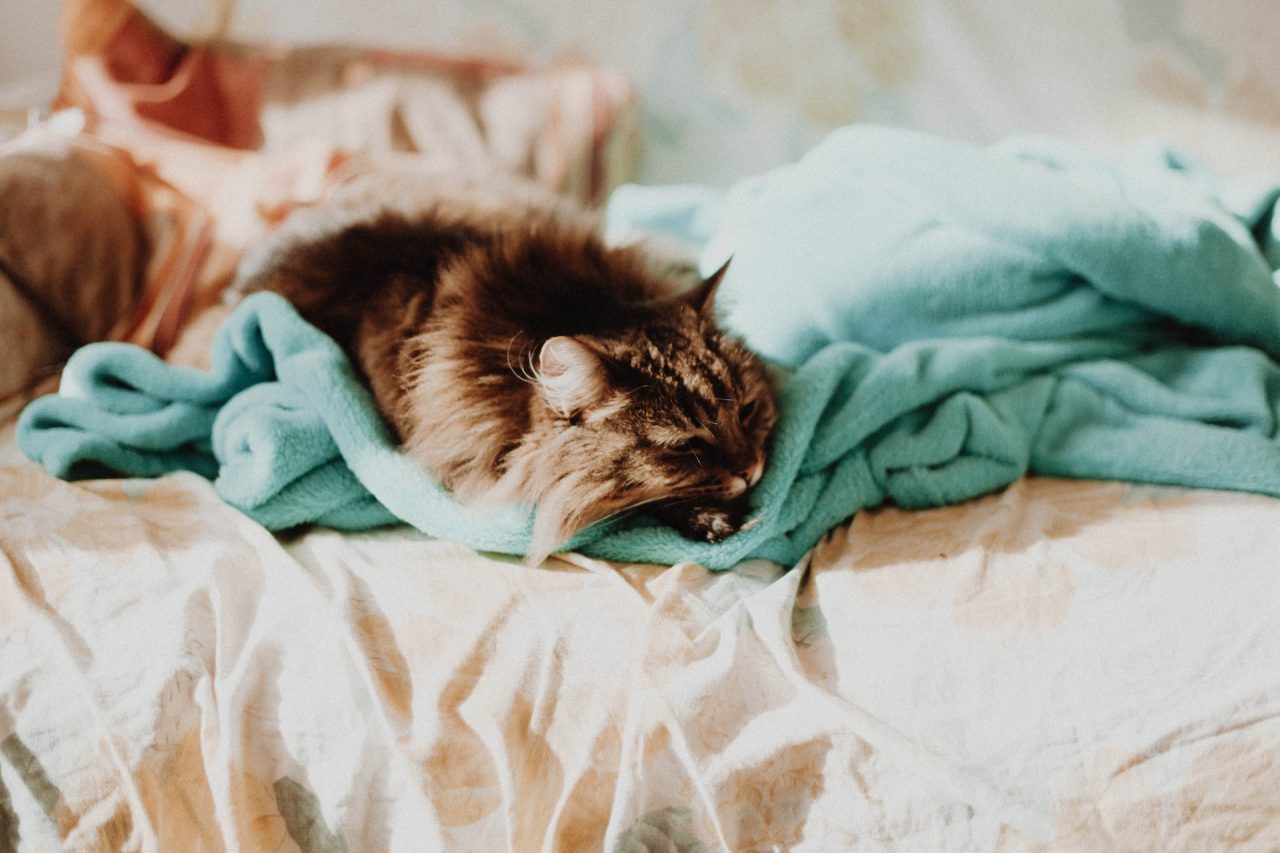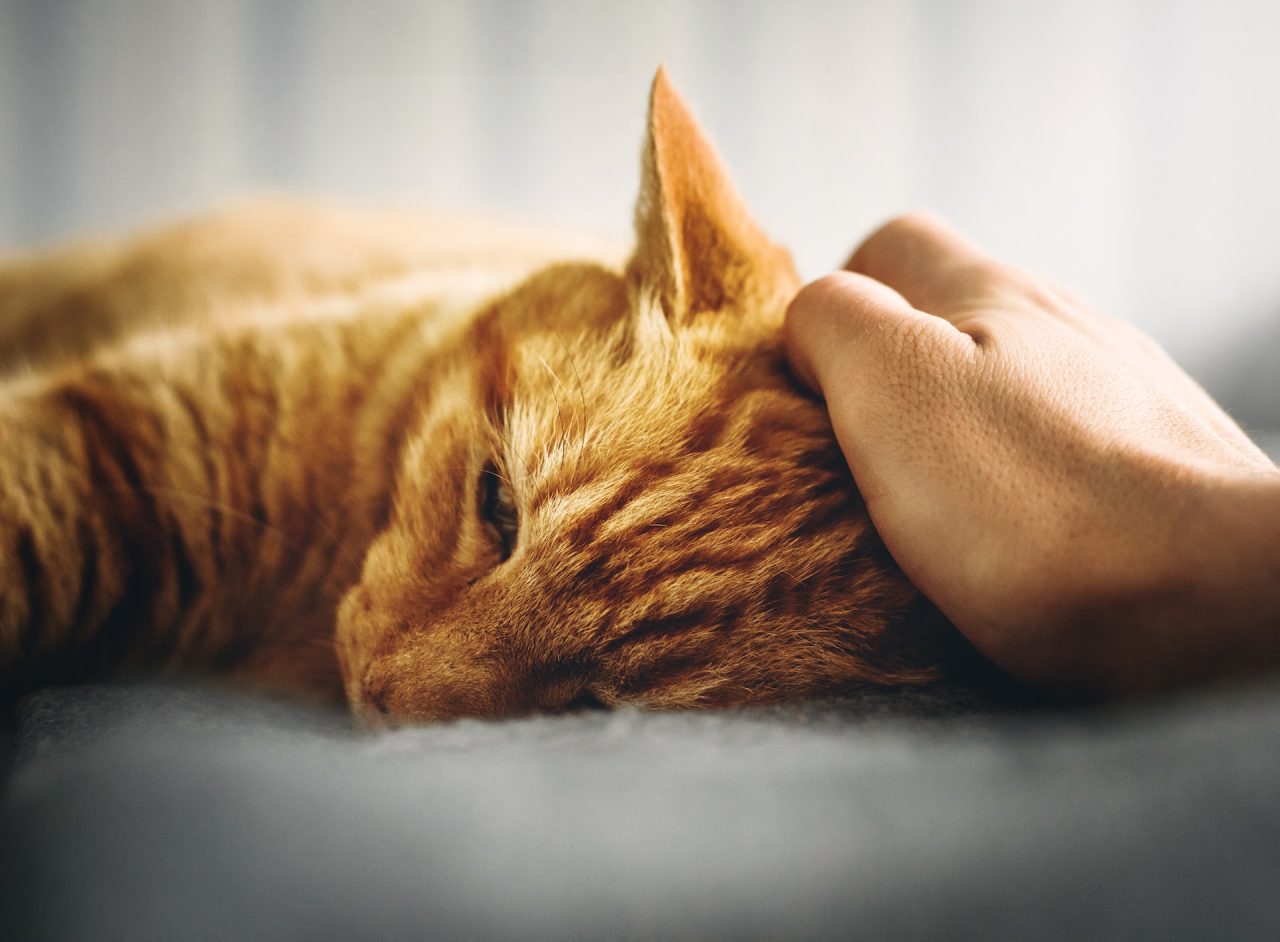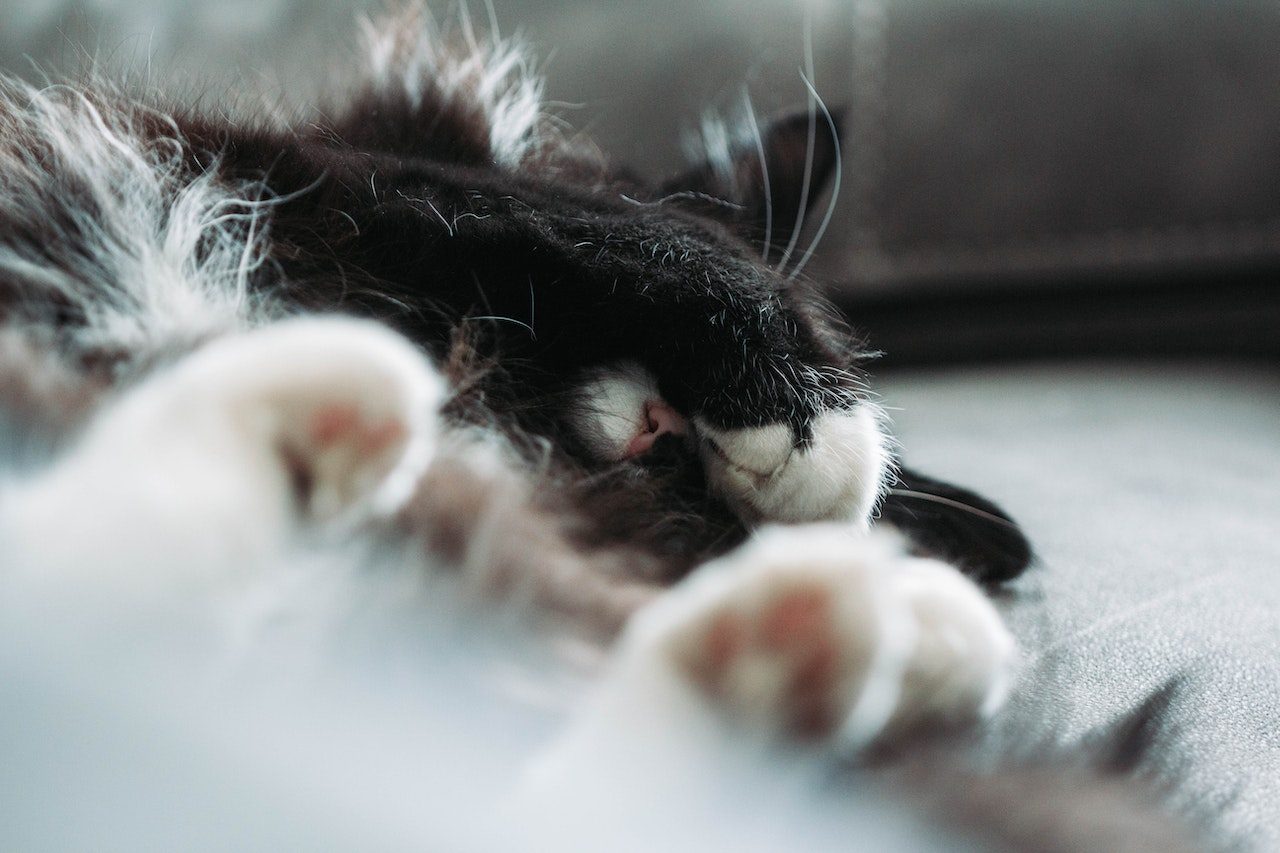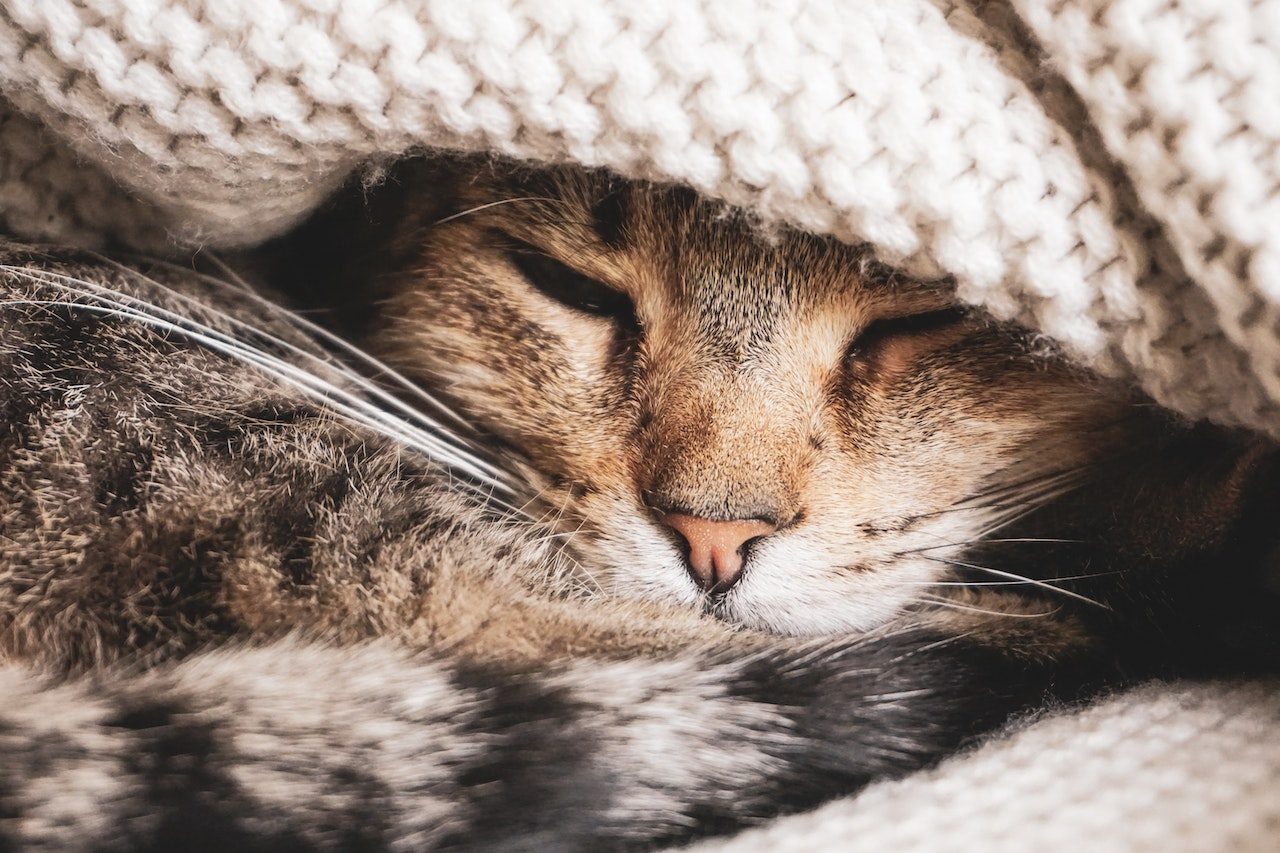Owning a cat can be one of the greatest things you’ve ever done. However, things aren’t so nice if your cat gets sick. Having a cat with FIP and trying to decide when to euthanize her is probably one of the hardest things in the world. You want to make all of her troubles go away, but still, it’s tough to make the right call.
Felines give us such an amazing time and every second we spend with them is worth it. Unfortunately, their life span is much shorter than ours, so we’ll inevitably have to part ways sometimes.
Even though they’re superior to us in every way because they’re simply awesome creatures, they’re not immortal. This is a fact that we all know deep down inside of us but sometimes refuse to admit. One day, we’re all going to have to say our goodbyes to our beloved pets.
It’s definitely something that’s going to impact our whole lives. Of course, every cat parent wishes for their furchild to go away in peace and pass the rainbow bridge without any pain and discomfort. We all want them to know that we loved them to bits and cared for them the best way we could.
However, sometimes life doesn’t go as planned. Unfortunately, it isn’t uncommon for a pet parent to have to euthanize a cat, especially one with FIP. It’s a choice that might keep you up most nights, tying the knot in the pit of your stomach, and bringing tears to your eyes.
What does FIP stand for?

FIP is caused by a feline coronavirus. Coronaviruses of various species may be found in a variety of animals, and they often cause acute respiratory or gastrointestinal illnesses. Unfortunately, FIP takes one out of every 100 cats from their owners.
The incidence might be 5 to 10 times higher in young cats. It’s the leading cause of abdominal fluid (ascites) and intraocular and neurologic inflammatory illness in cats in shelters.
The bad news is that FIP is almost always deadly, and there’s no effective treatment. The emotional toll of FIP is very high because it manifests itself unexpectedly weeks, months, or even years after the original infection.
Cats with FIP may first exhibit nonspecific symptoms such as lack of appetite, depression, rough coat, weight loss, a fluctuating drug-resistant fever, and increased susceptibility to infections (such as respiratory disease). More specific FIP symptoms differ based on the kind of illness (wet vs. dry) and the organs implicated.
Because there is presently no treatment for FIP, the major goal should be making the cat comfortable and determining when to euthanize her.
Nutrition, hydration, and stress-free settings are all crucial, but in almost all situations, they merely serve to delay the inevitable. As a result, we will recommend some owners use symptomatic therapy, but only if the animals are not in distress.
All in all, it’s a gruesome disease that attacks your feline with full-blown force and leaves you with almost no choice. Somehow, we always hope that our little warrior will defy the odds and be the one that pulls through all of the madness that comes along.
Unfortunately, sometimes hope just isn’t enough. That’s why you need to figure out when to euthanize a cat with FIP.
When to euthanize a cat with FIP?

When we brought our pets home, we promised them that we would take care of them for the rest of their lives. Therefore, if euthanizing your cat with FIP is a tough choice to make, just remember that it’s also one of the ways to care for your pet.
I know it’s easier said than done, but it’s for their own good. Sometimes, people will end up being selfish when they just want their cats to live a little longer. I understand this because they just wish for their pets to stay by their side.
But the truth is that no matter how long our pets live, it will never be enough. We will never be prepared for the moment of their departure. I always thought of the moment I’d have to let my cat go because I assumed it would make things easier when the time comes.
It didn’t make it any easier for me but I’d lie if I said that I wasn’t prepared for it a little bit. I knew it was coming and decided to make peace with it. That way, I could be there for my cat in the hardest moments of our lives.
If you’re still struggling to make the decision to euthanize your feline, some of these circumstances will help you figure out right from wrong. Perhaps you’re still not at the point where it’s inevitable but you’re only thinking about it for when the time comes.
This might help you get prepared so you know what to do and when to euthanize your cat with FIP. Sometimes, dragging this decision will make things a lot harder for your pet given the circumstances – and I don’t think that’s something you want.
1. Pain-ridden life
Usually, pain is the most common reason why an owner decides to put an animal down. We can’t bear to watch them hurt because we love them dearly. Our hearts shred into millions of tiny pieces when they’re in pain.
If your pet’s constantly hurting and there’s no way and no option to give her a bit of relief, then you should consider euthanasia. However, you might not notice this at first. Cats are stealthy creatures which means they’re good at hiding.
So your pet might be hiding the pain she’s feeling from you. It’s always a good idea to talk to your vet about it. Also, you can ask an experienced cat owner about this topic, especially someone who had to euthanize a cat with FIP.
Some obvious signs can help you determine whether your cat’s feeling any discomfort or pain. These include lethargy and a reduction in appetite and overall activity. Most cat owners simply notice when their pet is acting out of the ordinary.
For instance, my pet was very active and just a fluffy little bundle of joy. You could never catch her sitting still for one second because she was always up to something. Unfortunately, when she fell sick, she just didn’t feel like her old self.
The pain was just too much and she couldn’t take it anymore. She started being distant and hiding away in the corners of the house. Over time, she became completely antisocial and didn’t want anyone bothering her. It’s as if she wanted to pass away peacefully in those moments.
She would sometimes try and get some cuddles from me. But when I would go to pet her, she would cower away as if my touch was hurting her. The sensitivity increased over time to the point where I was even scared to touch her.
2. Not using the bathroom

One of the signs that your love story has come to an end is when your pet stops using the bathroom. You are well aware that cats are meticulous creatures who pay detail to everything. Well, isn’t it weird that your pet doesn’t use her litter box anymore?
This behavior is quite unusual for an animal that cares so much about its hygiene and often indicates something serious. In this case, it implies that your pet is getting weaker and weaker as time passes. Therefore, it might be the right time to euthanize your cat with FIP.
If your feline isn’t using the bathroom, she might develop some other issues next to her disease. It’s not about how long a cat can go without using the bathroom but more about the consequences. It might be sad news if your pet stopped using the litter box.
3. Lack of movement
The moment you know you should euthanize a cat with FIP is when she stops moving. In their last days, most cats will just try to sleep through the day. They’re just too tired to even try to stand up, let alone walk.
Their body isn’t strong enough to carry their weight, even though they’ve lost a couple of pounds. Also, it might hurt to walk as well because their body becomes more sensitive with each passing day. This is the time when the pain and exhaustion take over completely.
You should be aware that your little warrior fought her way through as long as she could and as long as she should’ve. A once hyper kitten and rambunctious cat is sleeping between your legs and she’s unrecognizable.
You feel her spark fading away. It’s still there, but barely visible. It diminishes with each passing day and there’s nothing you can do about it. Well, except make all the pain go away and let your pet sleep painlessly.
4. No appetite

There’s one thing that felines simply adore, and that’s food. These greedy little monsters will wake you up in the middle of the night, screaming at you to give them something to eat. It’s like they can never get full, no matter how much they’ve had for dinner.
So when your pet refuses to eat her food, you might figure out that there’s something seriously wrong with her. If you don’t know when you should euthanize a cat with FIP, it should definitely be the moment she refuses to eat.
By rejecting her favorite food and snacks, she’s only putting herself in more danger because she isn’t getting all the needed nutrients. Therefore, her body continues to get weaker by the day, and before you know it, she loses half her weight.
Also, she won’t even care to look at the water you just filled for her. Once upon a time, she used to scratch the floor before drinking water and play around with it.
However, she doesn’t even want to take a sip of water anymore. She simply isn’t interested and doesn’t feel the need to stay hydrated and full. She’s giving up on all the things she loves the most and stuff that her instincts tell her to do.
This might be her telling you it’s her time to go. Making this decision will never be easy but you need to think of what’s best for your pet. If you realize that life has become a struggle for her, then you know what needs to be done.
Read more: The Breeder Wanted To Euthanize This Kitten But The Employee Saved His Life

